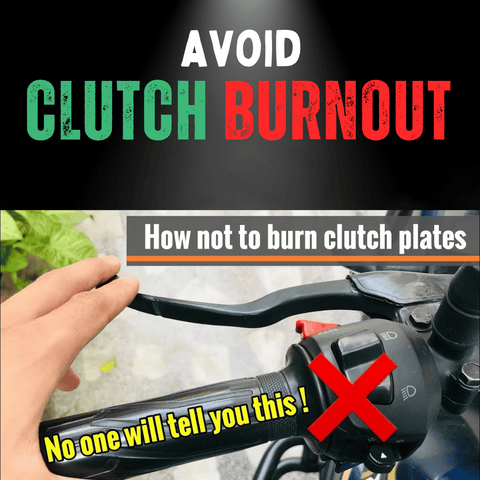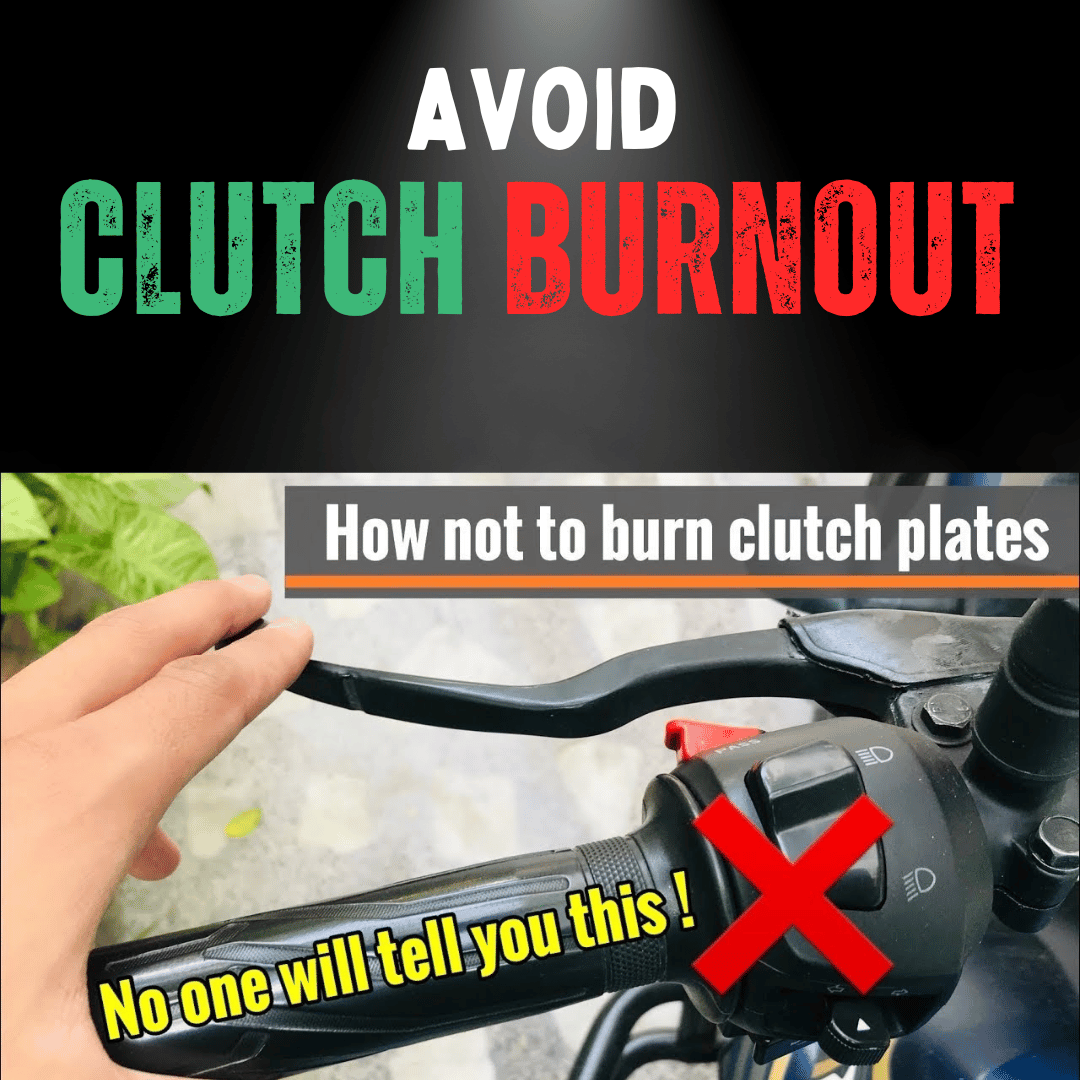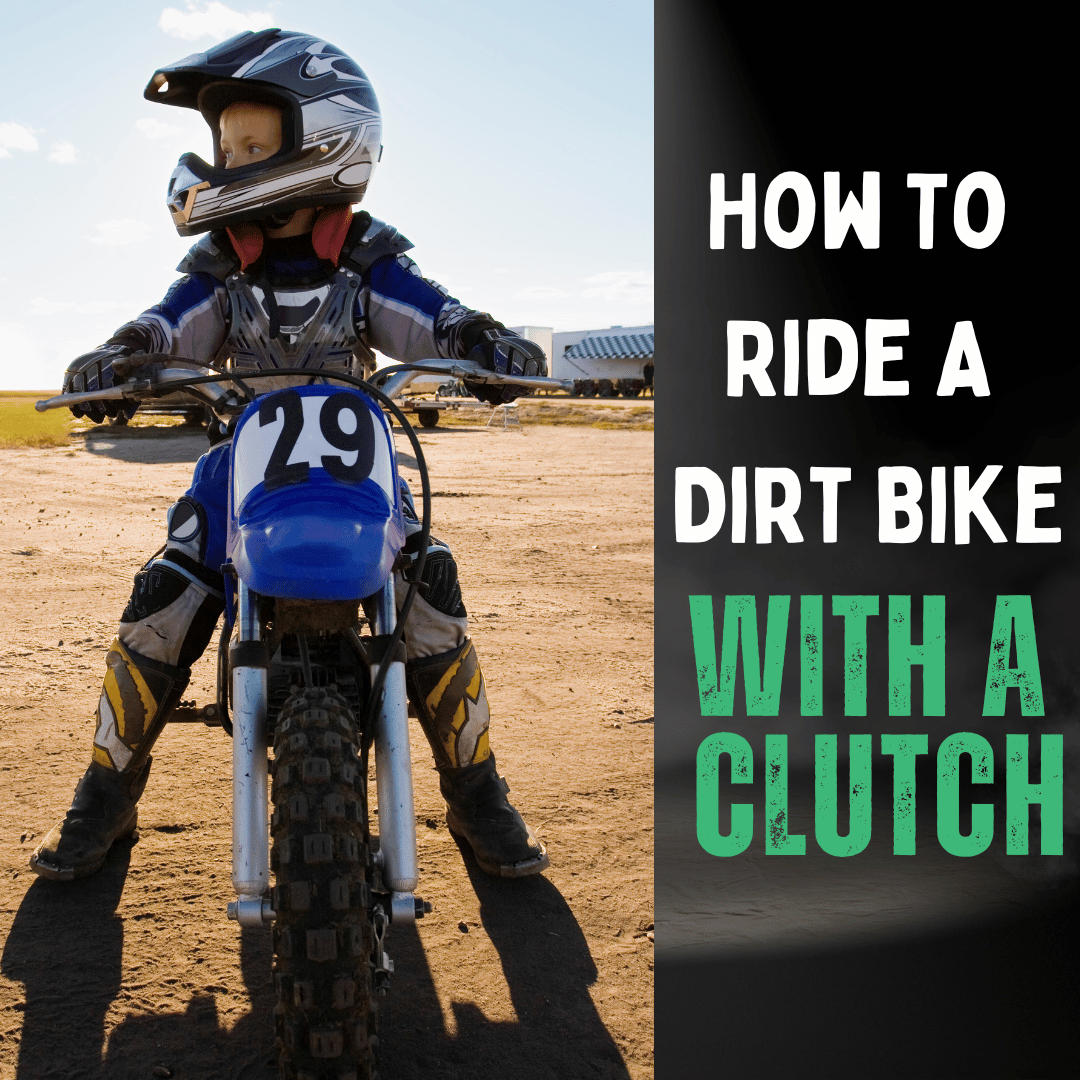
Updated: 14.05.25
Ever noticed a strange smell or power drop while riding your motorcycle? It could be your clutch signaling trouble. A failing clutch costs time, money, and peace of mind. Ready to keep it in top shape? Let’s dive into our top tips!
1. Keep Your Foot Off the Clutch When Not Shifting
Resting your foot on the clutch lever causes partial engagement, wearing it out faster. Keep it clear unless you’re shifting gears.
Related: How to Ride a Dirt Bike with a Clutch (Beginner’s Guide)
2. Fully Disengage the Clutch Between Gears
Jerky gear shifts often result from partial clutch engagement. Fully disengage for smoother transitions and less wear.
3. Use Engine Braking Wisely
Engine braking reduces clutch wear when done correctly, but improper use strains gears. Learn proper techniques to protect your clutch.
Related: How Does a Motorcycle Clutch Burn Out?
4. Regular Clutch Inspections
Periodically check and adjust your clutch to catch issues early. Regular maintenance extends its lifespan.
5. Minimise Clutch Slipping
Excessive slipping, like during slow riding, wears out the clutch. Use minimal engagement for better longevity.
Related: Do Pro Motocross Riders Use the Clutch?
6. Match RPM to Road Speed
High RPMs stress the clutch. Sync your RPM with road speed to prevent burnout and ensure smooth rides.
7. Use Proper Lubrication
Choose the correct oil grade for your clutch type (wet or dry). Poor-quality oil increases friction and wear.
Explore our motorcycle maintenance products for high-quality oils.
8. Opt for Quality Replacement Parts
Invest in high-quality clutch plates and springs for durability and performance. Avoid cheap alternatives that wear out quickly.
9. Consider Clutch Upgrades
Upgrading to a performance clutch can improve longevity and handling, especially for high-torque bikes.
10. Consult a Professional for Issues
For persistent problems, visit a mechanic for a thorough inspection. Early intervention saves costly repairs.
Related: 25 Game-Changing Motorcycle Hacks You Need to Know
Clutch Control in Traffic and Hills
Traffic and hills test your clutch control. At stoplights, shift to neutral and use brakes instead of holding the clutch. For hills, use the handbrake or foot brake to avoid clutch strain. Practice smooth hill starts to reduce wear.
Maintenance and Warning Signs
Regular maintenance prevents costly repairs. Check engine oil, clutch plates, springs, and cables regularly. Watch for warning signs like burning smells, slipping gears, or unusual noises. For hydraulic clutches, maintain clean fluid levels.
Simple DIY checks include inspecting cables for fraying, testing lever tension, and performing a stall test. A burning smell or failure to stall indicates potential clutch issues.
Understanding Clutch Components
The clutch system includes:
- Clutch Plate: Transfers power from the engine to the wheel.
- Clutch Spring: Maintains proper tension for engagement.
- Clutch Lever: Controls engagement and disengagement.
- Clutch Cable: Transmits lever commands to the clutch.
Wet vs. Dry Clutches
Wet clutches operate in engine oil, staying cooler and lasting longer, ideal for high-torque bikes. Dry clutches, found in older or performance models, produce more torque but wear faster due to no lubrication.
Repair Costs in 2025
Clutch repairs in the US range from $350 to $1200, averaging $650, depending on the bike’s make and labor rates. DIY repairs cost less—plates ($60), cables ($10), springs ($15)—but require skill. Harley Davidson clutches range from $450 to $1100 based on performance kits.
Conclusion
A well-maintained clutch ensures smoother, safer rides. Invest in regular checks, quality parts, and proper techniques to avoid burnout. Ride smart, and keep your clutch happy!
Frequently Asked Questions
How can I prevent my motorcycle clutch from burning out?
Avoid resting your foot on the clutch, fully disengage between gears, use proper oil, and maintain regular inspections to prevent burnout.
What are the signs of a failing motorcycle clutch?
Look for burning smells, slipping gears, difficulty accelerating, excessive vibrations, or shuddering when shifting gears.
Is feathering the clutch bad for my motorcycle?
Controlled feathering at low speeds is less harmful than riding the clutch at high speeds, which causes more wear.
Can I save money on clutch repairs?
DIY repairs with quality parts can cut costs, but professional help is best for complex issues to avoid further damage.
What’s the difference between wet and dry clutches?
Wet clutches run in oil for cooling and longevity, while dry clutches offer more torque but wear faster without lubrication.
Get in Touch 🚀
Loved our article on “10 Ways to Avoid Your Motorcycle Clutch from Burning Out"? Craving more motorcycle tips?
We’re here for all your ride-on toy and motorcycle questions! 🚗💨
Feeling curious?
Explore more at RiiRoo.com.
Or, chat with us via Live Chat for instant answers!









Share:
How Does A Motorcycle Clutch Burn Out?
What Are Rpms On A Motorcycle?